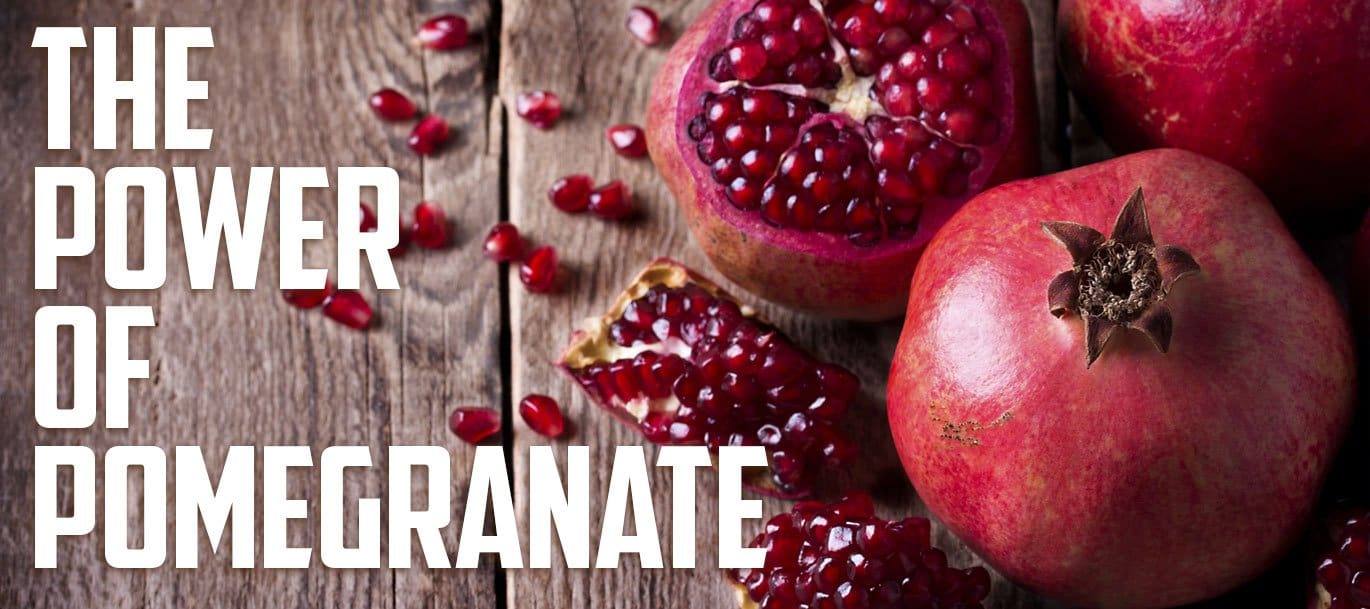The pomegranate is a fruit that was held sacred by many of the world's major religions. It is a symbol of hope, one of the ‘three blessed fruits’ in Buddhism, and a symbol of resurrection in Christianity. The pomegranate’s medicinal properties were already recognised in antiquity. The pomegranate is said to be the Tree of Life, and speculated as being the forbidden fruit in the Garden of Eden. Its Latin name Punica granatum literally means ‘seeded apple’ (Roberts 2015).
The pomegranate fruit is used in medicine as a symbol of persistence of life, fertility, and regeneration, originating from the Greek myth of Persephone. It is present in the coat of arms of The British Medical Association, The Royal College of Physicians, The Royal College of Midwives, and The Royal College of Obstetricians and Gynaecologists (Langley 2000).
The punicalagin polyphenols present in PJE have clinically shown to be a potent endothelial nitric oxide synthase (eNOS) activators (de Nigris et al. 2005; Denigris et al. 2007; Chen et al. 2008).
The endothelial was once considered as a simple barrier between the blood and vessel wall, but now we know that it plays a more important role being a dynamic organ which lines the entire vascular system. Endothelial cells line the inner walls of the arteries and control vascular functions such as vasomotion (which controls blood flow) and inflammation (Intaglietta 1990).
Nitric oxide (NO) is an endothelium-dependent vasodilator (Casino et al. 1993) and is created when the enzyme nitric oxide synthase (NOS) converts the amino acid L-arginine (Andrew 1999).
NO is produced in three ways, known as the three isoforms of NOS.
The first is neuronal nitric oxide synthase (nNOS) which produces NO to act as a neuronal messenger that regulates synaptic neurotransmitter release (Prast & Philippu 2001).
The second is macrophage or inducible nitric oxide synthase (iNOS), which is only expressed in cells that activate the macrophages after injury or inflammation (Michel & Feron 1997).
The third, and where pomegranate juice extract comes into effect, is endothelial nitric oxide synthase (eNOS), which produces NO in blood vessels (de Nigris et al. 2005).
Through the eNOS isoform PJE relaxes the inner muscles of the blood vessels (endothelial relaxation) (Vilahur et al. 2015), causing the vessels to vasodilate, further promoted by an increase in nitric oxide synthases (NOS) (Aquilano et al. 2008).
NO increases blood flow allowing for improved oxygen and nutrient transport and in this way, PJE also increases oxygenation which improves endurance (Trexler et al. 2014; Crum et al. 2017).
PJE not only increases NO levels but it also protects it by inhibiting superoxide anion, a NO modulator that decreases its bioavailability (Villamor et al. 2003). PJE does this by promoting the release of an enzyme from the mitochondria called superoxide dismutase (SOD) which acts as an anti-inflammatory by neutralising the highly reactive superoxide anion radical, breaking it down into oxygen and hydrogen peroxide.
When you have an infection, the immune system deploys superoxide from the mitochondria to hunt down the invading microorganisms and destroys them. Once this has been completed, then SOD is released to neutralise superoxide, keeping balance. This balance however shifts as we age and the endothelial lining thins, becoming less optimal at releasing enough SOD, leading to overproduction of superoxide, causing oxidative stress (Kitani 2007). SOD is important as it also repairs cells damaged by the superoxide anion radical (R. Buettner & Buettner 2011).
Another way PJE protects NO levels is by inhibiting arginase, the enzyme involved in the breakdown of nitric oxide (Aharoni et al. 2015). By inhibiting arginase and the superoxide anion, more NO circulates the body, prolonging muscle pump.
Not only is the muscle pump compromised by these radicals, but actual energy levels too. When a cell is inflamed at the cell membrane (the outer cell wall) and the inner mitochondrial membrane (where energy is produced), nutrients cannot get into the cell and energy cannot escape the cell, causing fatigue (Lacourt et al. 2018).
There are other herbal extracts that work in a similar way protecting NO, such as grape seed extract, but PJE has shown to be superior (Ignarro et al. 2006; Henning et al. 2014). A study published in the "Journal of Agricultural and Food Chemistry" in 2000 reported that pomegranate juice has more than twice the antioxidant content of green tea (Gil et al. 2000) and grapeseed extract (Durante et al. 2017).
By consuming PJE high in punicalagins you will improve endothelial function and improve the benefits that come with it (Kelishadi et al. 2011).
Most commercial extracts of pomegranate have been found to be lacking true pomegranate polyphenols, having been adulterated with cheaper and lower quality polyphenol content (Zhang et al. 2009), however the highest standard available is PomeGranite™ PJE, a high quality 80% standardised extract of punicalagins, unique to the pomegranate alone (Heber 2012).
An extract from the book 'Creating The Anomaly'.
After a product that uses pomegranate? Try Controlled Labs Green Might.

